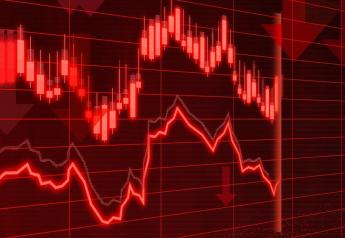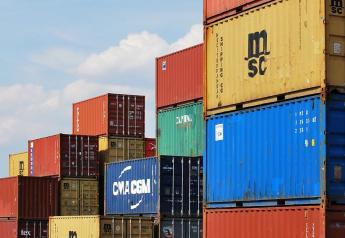China Closes WH Group Slaughterhouse, Restricts Transport Due to ASF
Chinese officials are racing to control the country’s outbreak of African Swine Fever (ASF) that has put the largest pig herd in the world under threat. There have been three documented cases in one month and more are likely industry leaders say.
WH Group Ltd, the world’s top pork producer, was ordered by Chinese officials to close a major slaughterhouse on Aug. 16 for six weeks to help control the disease spread.
Though often fatal to pigs, with no vaccine available, ASF does not affect humans nor does the virus travel through consumption of pork, according to the United Nations’ Food and Agriculture Organization (FAO).
WH Group said in a statement that Zhengzhou city authorities had ordered a temporary six-week closure of the slaughterhouse after 30 hogs died of ASF Aug. 14. The plant is one of 15 controlled by China’s largest pork processor Henan Shuanghui Investment & Development, a subsidiary of WH Group. Shuanghui said in a separate statement on Friday it culled 1,362 pigs at the slaughterhouse after the infection was discovered.
Zhengzhou city authorities have banned all movement of pigs and pork products in and out of the affected area for the same six weeks.
Beijing Dabeinong Technology, another large Chinese pork producer, told Reuters Monday a large portion of their newly expanded pig farming capacity sits idle because of the disease risk—increasing production costs and pushing the company into its first loss in years. The second factor, it says is higher cost of soybean meal due to tighter feed supplies.
Pigs Travel Long Distances
Each of the three reported cases are considerable distance from each other, potentially increasing the risk of the disease spreading to other areas, including Japan, the Korean Peninsula and other parts of Asia.

Each case of African Swine Fever reported in China are located in different provinces—putting a large number of pigs at risk of contracting the disease. Here are the distances by road from each of the different points: 1: = 870 miles (1,400 km); 2= 1,400 miles (2,253 km); 3: 350 miles (563 km); 4: 800 miles (1,288 km).
“The areas of concern now involve multiple Chinese provinces and heighten the likelihood of further cases,” the Swine Health Information Center, a U.S. research body, said in a note.
ASF has been detected in Russia and Eastern Europe as well as Africa, though never before in East Asia.
The discovery continues to affect hog prices in the country, although WH Group said Friday it did not expect the Zhengzhou slaughterhouse closure to adversely affect its business, citing it is only a small part of the company’s operations.
Neighbor Countries Take Precautions
South Korea doesn’t import pork or pigs from China, but the government has stepped up checks at airports on travelers from the country, and recommended visitors there avoid farms and live markets, the Ministry of Agriculture said on Friday, Reuters reports.
In Japan, authorities have ramped up checks on travelers from the affected regions, its Ministry of Agriculture said. It bans imports of raw pork from China.
Does This Up the Need for a Secure Pork Supply?
U.S. pork leaders say a disease outbreak such as this could be more efficiently managed with use of the Secure Pork Supply program. The program at it’s most basic would allow for digital recordkeeping, and increased communication between producers, veterinarians and processors.
“As bio-secure as we are, at some point we will have a foreign animal disease—as much as we try to prevent it. Secure Pork Supply is a program to better enable us to respond to when that does happen. We've got to be ready, and producers need to be involved ahead of time,” said Dave Pyburn, National Pork Board vice president of science and technology, during the 2018 World Pork Expo.
Find more details at www.securepork.com. Further details of the Secure Pork Supply program were announced during the 2018 World Pork Expo.







